Articles & Videos
Explicitly teaching mental computation strategies improves maths fluency
Categories
Subscribe to our newsletters
Receive teaching resources and tips, exclusive special offers, useful product information and more!
Explicitly teaching mental computation strategies improves maths fluency
Think Mentals 12/3/16

Fluency in maths means being able to solve maths problems quickly, easily and accurately. To improve your students’ maths fluency, an effective mental maths program needs to provide more than simple practice drills and homework exercises. It also needs to teach mental computation strategies in a systematic way.
To give your students the best opportunity to improve their maths fluency, it is important to follow a carefully structured sequence when teaching mental computation. Here is how the teaching sequence of Think Mentals works in the classroom:
1. Teach the basic principles behind mental computation strategies
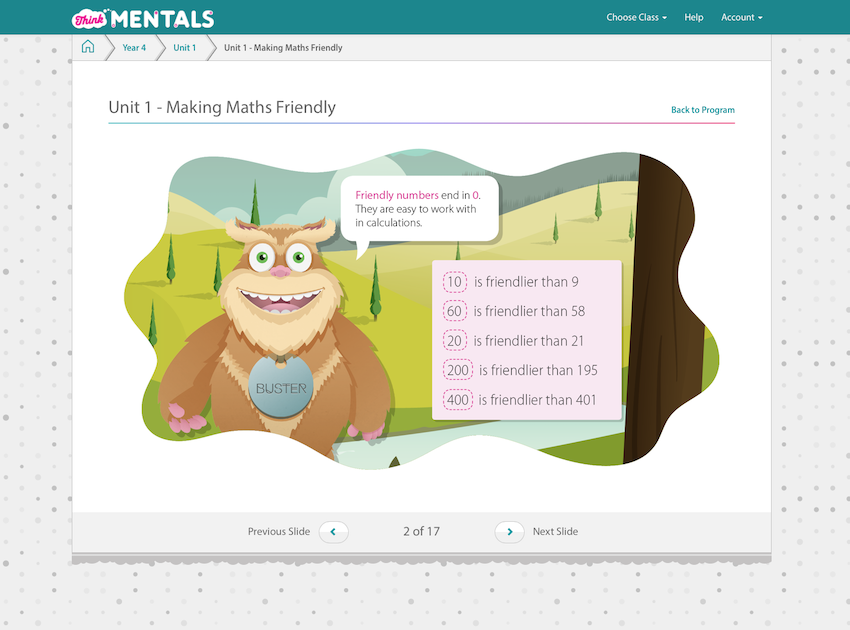
In Think Mentals, learning the basics is all about making numbers friendly. Students learn how to break tricky maths problems into manageable chunks using a simple two- or three-step sequence. By learning the basics, students learn how to find, make and fix friendly numbers using simple, scaffolded strategies.
Unit 1 (Years 2–6) includes an engaging tutorial that gives students a solid foundation for learning the basics. It’s important to work through this unit as a class so you can ensure all students are ready to move on to learning the strategies.
2. Demonstrate how to use each strategy by using clearly explained examples
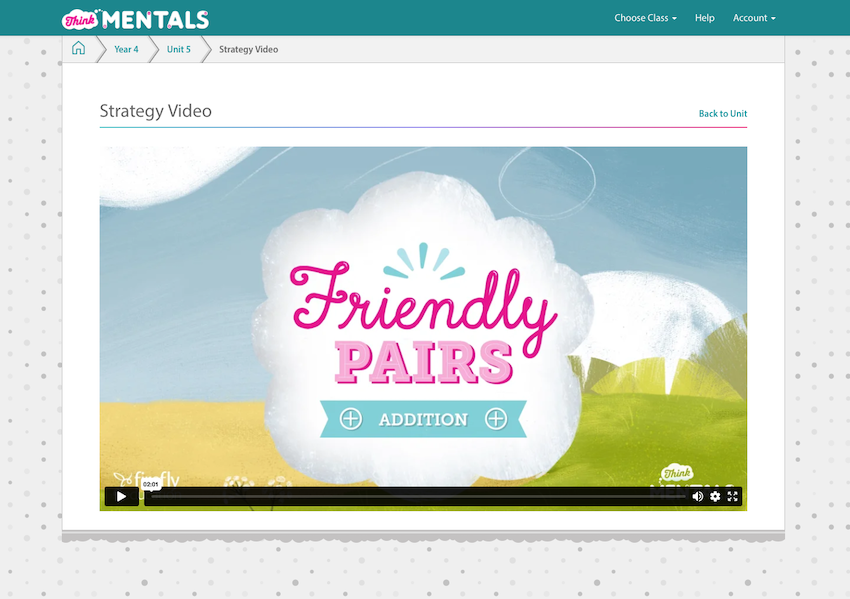
Day 1 of Units 2–19 begins with a new strategy.
If you’re using the Student Workbooks, model the strategy for the whole class by projecting the step-by-step examples onto your smart board. Projectable strategies and answers are available at thinkmentalsanswers.com.au. Students can then apply the strategy to the practice questions.
If you’re using Think Mentals Digital Classroom, each lesson contains a strategy video, strategy slideshow and worked example for you to project and work through with your whole class.
3. Provide students with plenty of structured practice using the strategy
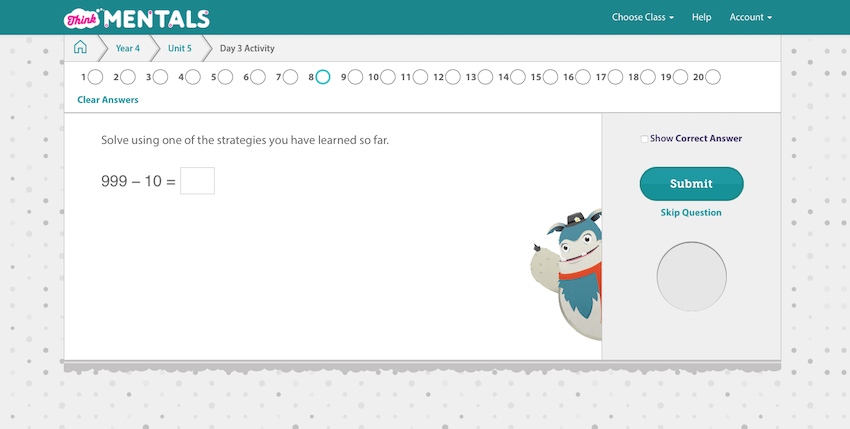
To promote fluency in maths, Days 2–4 of the weekly program include:
- dedicated practice of the week’s focus strategy
- revision questions to reinforce previously learned strategies
- a variety of question types from across the ACARA content strands.
If you’re using the Student Workbooks, don’t forget to project the answers from thinkmentalsanswers.com.au for self or peer marking.
If you’re using Think Mentals Digital Classroom, answers are automatically marked as students progress through their activities, allowing for more immediate feedback.
4. Use the weekly test to provide a snapshot of students’ understanding
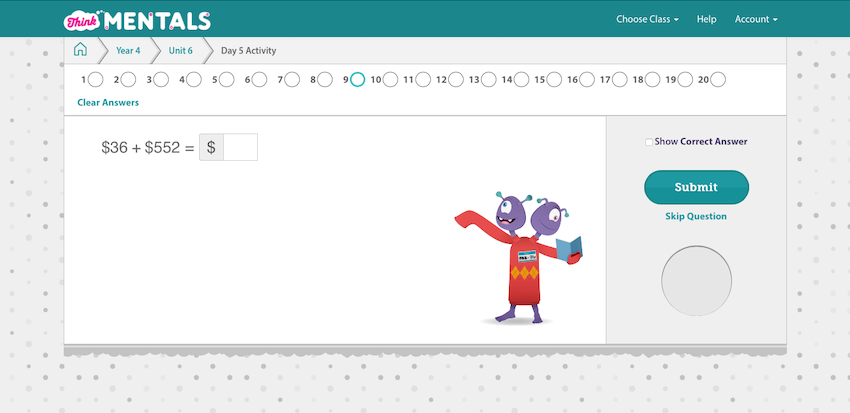
The Day 5 assessment combines focus, revision and core content questions.
If you’re using the Student Workbooks, students can record their results in the Student Assessment Profile at the back of the book.
If you’re using Think Mentals Digital Classroom, Day 5 assessment results will be automatically collated in Student Portfolios.
5. Revise all strategies to consolidate learning
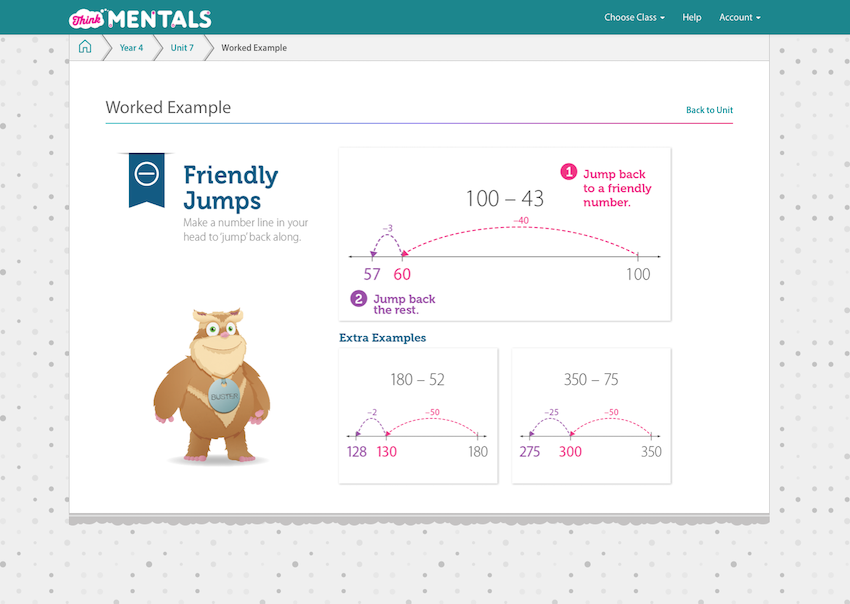
Encourage students to refer back to strategy examples if they need a reminder of how to apply a certain strategy. You can also take this opportunity to revisit strategies that your class may have found more challenging the first time around.
Units 20–32 are carefully designed to revise all strategies. Refer to the Strategy Overview Guide to see which strategies are introduced or revised in each unit.